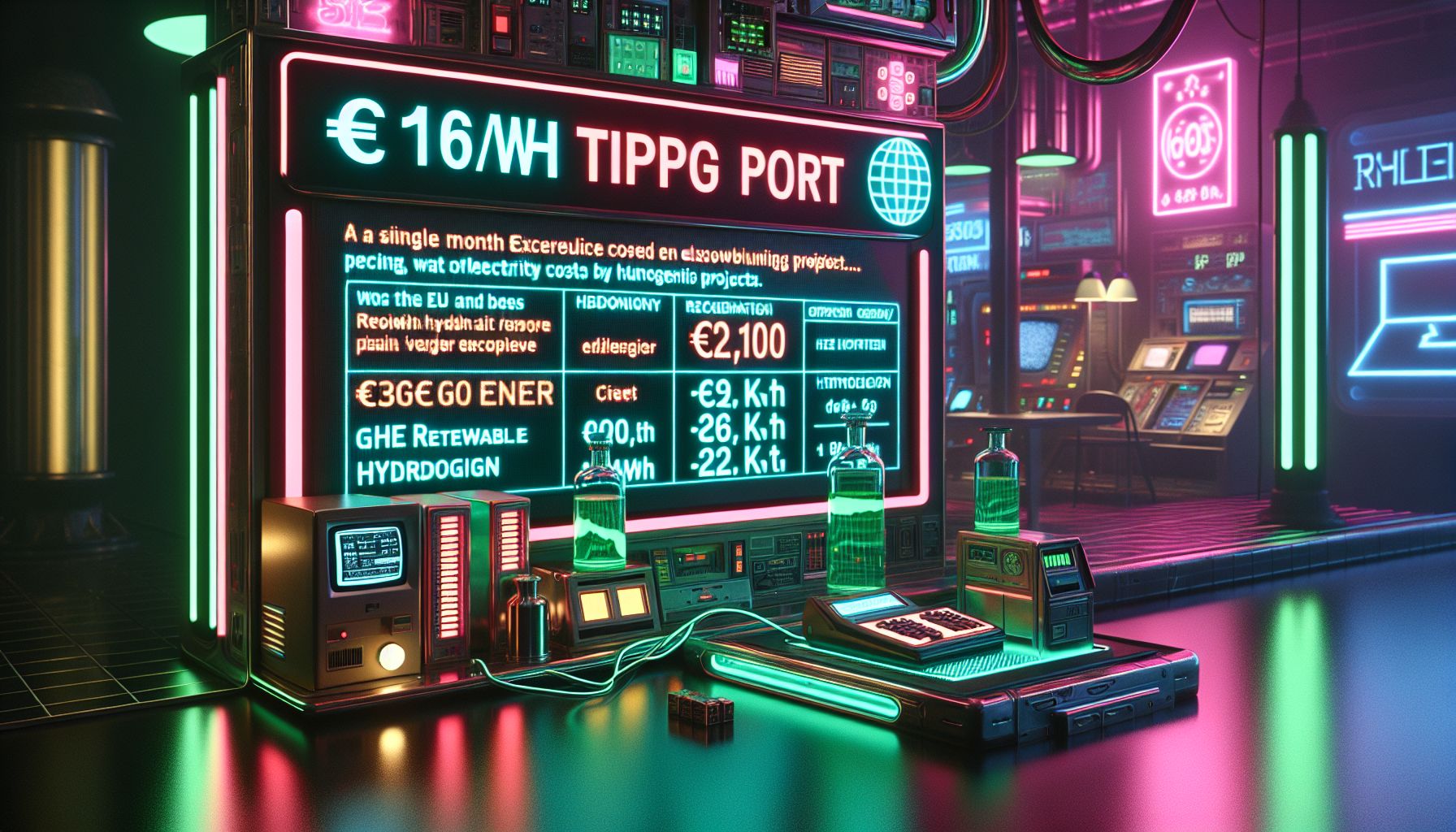The €160/MWh Tipping Point: Why Green Hydrogen Projects Are Hitting the Pause Button

Global, Thursday, 21 November 2024.
Major companies are delaying green hydrogen projects as production costs remain prohibitively high. A single month of electricity costs exceeding €160/MWh can devastate project economics, as revealed by SCG’s recent pullback. While the EU targets 10 Mt of renewable hydrogen by 2030, current production sits at just 22 kt, highlighting the massive gap between ambition and reality in the emerging hydrogen economy.
The Financial Reality Check
It’s like trying to fill a swimming pool with a garden hose – the scale of ambition versus reality in the hydrogen sector is staggering. SCG’s decision to delay its green hydrogen projects underscores the financial hurdles. With electricity costs occasionally spiking above €160/MWh, the economic viability of these projects teeters on the edge. This isn’t just a problem for SCG; it’s a widespread issue impacting potential growth across the entire sector. The European Union’s goal of producing 10 million tonnes of renewable hydrogen annually by 2030 seems like a distant dream when faced with such daunting economic realities.
Economic Viability of Hydrogen
The challenges don’t stop at high electricity prices. Producing green hydrogen requires substantial investment in infrastructure and technology, not to mention the ongoing operational costs. The levelized cost of hydrogen (LCOH) is critical here, influenced by these energy prices and the scale of renewable energy deployment necessary to meet production targets. Even with tax incentives like the Inflation Reduction Act’s credits in the US, the financial landscape remains tough[1]. In Europe, this challenge is compounded by the need for rapid deployment of electrolysers and decarbonisation of the electricity sector to make green hydrogen competitive.
The Role of Policy and Incentives
Policy plays a pivotal role in shaping the hydrogen market. The EU’s strategic targets and regulatory frameworks aim to bridge the gap between current production and future goals. However, the implementation of these policies varies across member states, creating a patchwork of progress and challenges[2]. Incentives like tax credits and investment in renewable infrastructure are crucial, yet the complexity of navigating these options can deter investors. Despite these hurdles, the push for sustainable hydrogen continues, driven by a broader commitment to reducing carbon emissions and transitioning to cleaner energy sources.
Looking Ahead: The Path Forward
So, what’s next? For green hydrogen to thrive, a concerted effort is needed to lower production costs and enhance economic viability. This involves not only scaling up renewable energy sources but also innovating in hydrogen production technologies. There’s hope in emerging solutions, like integrating solar and wind power with hydrogen production facilities, which could offer more stable and cost-effective pathways. The journey is far from over, but each step forward brings us closer to a sustainable hydrogen economy.